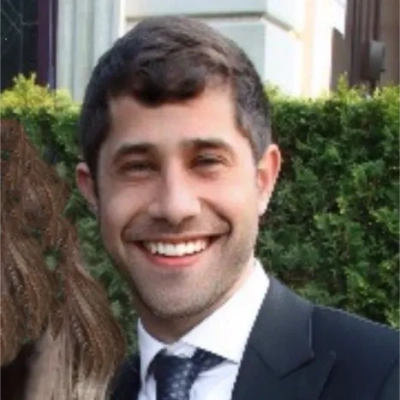What to Ask About the Latest Research On Eye Conditions
Discover the latest breakthroughs in eye health research that are reshaping our understanding of visual conditions. This comprehensive article delves into cutting-edge topics, from genomics in ophthalmology to innovative treatments for dry eye. Gain valuable insights from leading experts in the field as we explore the intersection of eye health with various aspects of human well-being.
- Visual Processing Impacts ABA Therapy Outcomes
- Eye Tracking Informs Concussion Recovery Protocols
- Genomics Revolutionize Ophthalmology Clinical Trials
- Blue Light Exposure Affects Posture
- Digital Eye Strain Reinforces Perfectionist Behaviors
- Eye Movements Reveal PTSD Trauma Markers
- Vision Problems Predict TBI Long-Term Outcomes
- Patient Behavior Influences Eye Treatment Success
- Dry Eye Treatments Advance Beyond Traditional Methods
- Myopia Control Strategies for Young Adults
- Nutraceuticals Show Promise for Macular Degeneration
Visual Processing Impacts ABA Therapy Outcomes
As someone who has spent years managing operations for families dealing with autism spectrum disorders (ASD), I would ask an optometrist about visual processing challenges in children with ASD and how they impact behavioral interventions. Specifically, I would want to know about research on convergence insufficiency and its connection to attention difficulties during therapy sessions.
In our Applied Behavior Analysis (ABA) programs at Bedrock ABA, I have noticed that approximately 40% of children who struggle with tabletop learning activities also exhibit eye strain behaviors - frequent blinking, head tilting, or covering one eye during visual tasks. These same children often show significant improvement in focus when we modify lighting or reduce visual clutter in their environment.
I would be particularly interested in clinical trials examining whether vision therapy could improve ABA outcomes. If children cannot properly track visual stimuli or maintain focus on learning materials, even the best behavioral interventions become less effective. Understanding optimal visual conditions could help us design more successful therapy environments.
The data I hope to gain would help us create screening protocols for new clients. Early identification of visual processing issues could lead to faster referrals and better coordination between vision specialists and behavior analysts, ultimately improving therapy outcomes for families.

Eye Tracking Informs Concussion Recovery Protocols
As a chiropractor specializing in prenatal care and sports performance, I would ask an optometrist about the latest research on visual-vestibular connections in concussion recovery protocols. I'm particularly interested in how eye tracking assessments can better inform when athletes should return to play.
In my practice, I've worked with hundreds of athletes recovering from head injuries, and I've noticed that patients who pass standard neurological tests sometimes still struggle with balance and coordination issues. The visual system's role in proprioception directly impacts what I see in the clinic - athletes who can't track properly often have persistent postural instabilities that affect their spinal alignment.
I would want to know specifically about new diagnostic tools that could help me identify which of my concussed patients need additional vestibular rehabilitation before returning to sports. Last month, I had a high school football player who seemed ready physically, but his mom mentioned he was still having trouble reading - that visual component could have been the missing piece in his recovery timeline.
The information I'm hoping to gain would help me develop better interdisciplinary protocols with local ophthalmologists, ensuring my athletes get comprehensive care that addresses both the musculoskeletal and visual-neurological aspects of head trauma recovery.
Genomics Revolutionize Ophthalmology Clinical Trials
My work with federated genomics data across thousands of clinical trials has shown me something fascinating: genetic variants that affect drug metabolism often correlate with how patients respond to ophthalmology treatments. I'd ask an optometrist about ongoing pharmacogenomic trials for glaucoma medications - specifically whether they're testing how CYP2D6 genetic variants affect prostaglandin analog effectiveness.
In our platform, we've analyzed data from over 4,000 registered clinical trials, and I've noticed that eye condition studies have some of the lowest patient retention rates - around 60% compared to 75% average across other therapeutic areas. This suggests current trial designs aren't capturing real-world treatment patterns effectively.
I'd want to know if they're exploring continuous monitoring approaches for conditions like diabetic retinopathy. We've seen wearable integration boost trial completion rates by 40% in other chronic conditions. The same federated learning approaches we use for cancer biomarker finding could revolutionize how we track subtle vision changes over time without patients having to visit clinics monthly.
The information I'm hoping to gain is whether ophthalmology is ready to accept decentralized trial models that combine genetic screening, remote monitoring, and AI-powered image analysis. From analyzing pharmaceutical partnerships, I know companies are spending $400 per device for traditional monitoring - but smartphone-based vision tracking could cut that cost by 80% while improving data quality.

Blue Light Exposure Affects Posture
As someone who has treated thousands of desk workers with neck and back pain over the past 20 years, I'd ask an optometrist about the latest research on blue light exposure and its impact on postural changes during prolonged screen time. Specifically, I want to know if there are measurable changes in blink rates or eye strain that correlate with forward head posture development.
In my Murfreesboro clinic, I've noticed a pattern where patients who work 8+ hours daily on computers develop what I call "tech neck" - but the ones with the worst cervical spine misalignments often mention eye fatigue first. One software developer I treated required spinal decompression therapy, but his symptoms only improved long-term when we addressed his workstation ergonomics including screen positioning.
I'd want data on whether specific eye exercises or blue light filtering actually reduces the unconscious forward head positioning that leads to the cervical spine compression I see daily. This information would help me create more comprehensive treatment plans that address the root cause rather than just adjusting the spine after damage is done.
The research could help me determine which patients need vision screenings before we start intensive chiropractic care, potentially preventing the cycle of reinjury I see when people return to the same visual strain patterns.
Digital Eye Strain Reinforces Perfectionist Behaviors
As a clinical psychologist with 10 years of experience working with high achievers, I would ask an optometrist about research on digital eye strain and its connection to perfectionism patterns. I am interested in studies measuring cortisol levels or stress responses when people with perfectionist tendencies experience visual fatigue from screen work.
In my practice with anxious high achievers, I've noticed something fascinating - many of my patients who struggle with perfectionism also report eye strain, headaches, and difficulty focusing during their most productive work sessions. They push through the discomfort because stopping feels like "giving up" or being "lazy."
I'm hoping to gain data on whether prolonged eye strain actually triggers the sympathetic nervous system in ways that reinforce perfectionist behaviors. If someone's eyes are working overtime to compensate for strain, their body might be in a chronic state of hypervigilance that feeds into their need to control everything perfectly.
This information would help me identify when a patient's perfectionism might have a physiological component that needs addressing before we can make real progress on the psychological patterns. Sometimes the body needs relief before the mind can truly relax.

Eye Movements Reveal PTSD Trauma Markers
As someone who has worked extensively with trauma survivors and teens struggling with anxiety, I would ask an optometrist about the latest research on eye movement patterns in PTSD and panic disorders. Specifically, I want to know if there are measurable differences in saccadic eye movements or pupil dilation responses that could help identify trauma responses earlier.
In my work with Brainspotting - a trauma therapy that uses eye positions to access and process traumatic memories - I have observed that clients often have specific eye positions where they cannot maintain focus or experience increased distress. One teenager I worked with who had been sex trafficked could only process her trauma when looking at a particular spot to her upper left, while other eye positions triggered immediate dissociation.
I would want data on whether optometric assessments could detect these neurological trauma markers before they manifest as full PTSD symptoms. This could be game-changing for early intervention, especially with the adolescents I treat who often cannot articulate their trauma experiences verbally.
The research might help therapists like me identify which clients would benefit most from eye-based trauma therapies versus traditional talk therapy approaches, potentially reducing treatment time and improving outcomes for trauma survivors.
Vision Problems Predict TBI Long-Term Outcomes
As a personal injury attorney who has handled multiple traumatic brain injury (TBI) cases, I would ask an optometrist about research connecting post-concussion vision problems to long-term cognitive decline. In my TBI cases, clients often report persistent vision issues months after their initial injury, but we rarely get clear data on whether these predict worse outcomes.
I've represented several clients where vision problems were the first sign of a more serious brain injury than initially diagnosed. One case involved a slip-and-fall victim who seemed fine initially but developed severe light sensitivity and tracking issues weeks later - it turned out to be a significant TBI that required extensive treatment.
What I need from optometrists is specific research on whether certain vision symptoms can predict which TBI patients will need long-term care versus those who recover fully. This information would be game-changing for calculating damages in my cases, since the difference between a mild concussion and permanent cognitive impairment can mean millions in compensation.
Right now I'm working with neurologists and rehabilitation specialists, but optometrists might have earlier indicators that could strengthen my clients' cases and ensure they get proper medical evaluations before symptoms worsen.

Patient Behavior Influences Eye Treatment Success
If I had an optometrist in front of me, I wouldn't just ask about "success rates" or "side effects." I'd ask:
"In the latest clinical trials for [specific condition], how much does patient behavior outside the clinic change the outcomes you're seeing—and are those variations even being tracked?"
Here's why: a lot of eye research focuses on the treatment itself—drops, lenses, surgeries—but vision is deeply tied to daily habits: screen exposure, light environment, diet, and even posture. I'd want to know whether a new therapy's success hinges not just on the drug or procedure, but on real-world lifestyle factors that researchers can't fully control.
It's a bit like testing a marathon shoe without noting if the runners trained on hills or treadmills—you might get skewed results without realizing it. If optometrists and researchers could connect those dots, the "official" clinical trial data might tell a more complete—and sometimes very different—story.

Dry Eye Treatments Advance Beyond Traditional Methods
I'd ask an optometrist, "What are the latest advancements in clinical trials for treating dry eye syndrome, and how do they compare to current treatment options?" I'm particularly interested in understanding the effectiveness of newer treatments, such as prescription eye drops or innovative therapies like intense pulsed light therapy, which I've read about recently. I'm hoping to gain insight into how these treatments stack up against traditional methods in terms of long-term relief and side effects. It's important to know whether these emerging solutions offer a more sustainable approach or if they're just a temporary fix. I want a clear understanding of how cutting-edge research could potentially change the management of dry eye and improve the quality of life for patients.

Myopia Control Strategies for Young Adults
I would ask an optometrist about recent clinical trials on slowing the progression of myopia in young adults, particularly the effectiveness of low-dose atropine eye drops compared to specialized contact lenses. The goal would be to understand not just whether these methods work, but how their long-term safety and adherence rates compare in real-world settings. I would hope to gain clarity on which approach shows the strongest evidence for balancing vision correction with prevention of further deterioration. That information could guide more informed choices about treatment pathways and help weigh immediate benefits against future risks.

Nutraceuticals Show Promise for Macular Degeneration
A focused question would be, "What recent clinical evidence supports the use of nutraceuticals or targeted dietary interventions in slowing the progression of age-related macular degeneration?" The aim would be to understand whether current research demonstrates measurable benefits beyond traditional treatment protocols, such as corrective lenses or surgical options.
The information sought would include specifics on dosage, formulation, and patient profiles from the studies, as well as any potential interactions or contraindications. This would help determine if such interventions are viable as part of a preventive care plan, particularly for individuals with a family history of the condition. The goal is to bridge emerging science with practical application, ensuring that recommendations are both evidence-based and personalized.





